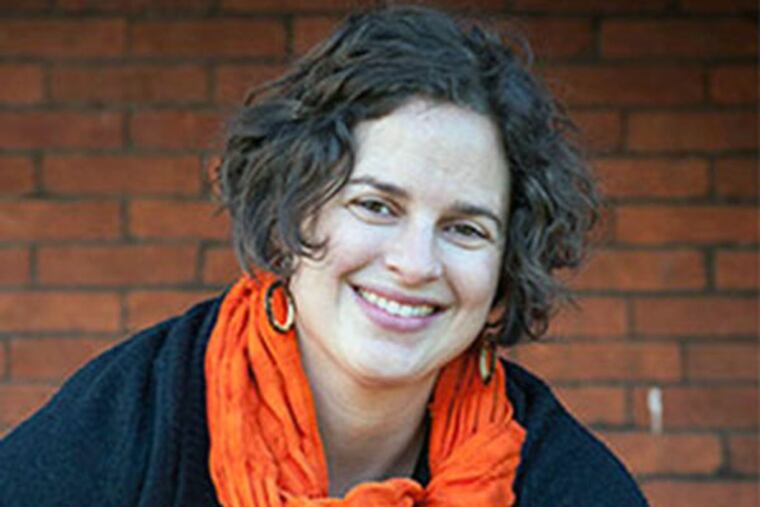Dusty tapes to innovative website, tales from African Americans' Great Migration
The audio tapes lay silent in a box at the Philadelphia History Museum for three decades, as the people whose stories they held passed away.

The audio tapes lay silent in a box at the Philadelphia History Museum for three decades, as the people whose stories they held passed away.
In the 1980s, researchers interviewed nearly 60 aging black Philadelphians who had traveled from the South as part of the first Great Migration in the early 1900s, or who had lived in the city as its black population burgeoned.
Fannie Hutchinson, raised on a sharecropper farm in Virginia, moved to the city in the 1920s. Two decades later, she owned a grocery and luncheonette in West Philadelphia.
Hughsey Childs grew up picking cotton with his family in South Carolina. When the boll weevil destroyed the crop, he headed to Philadelphia, where he worked as a chef. Childs helped grow a church - Morris Chapel Baptist at 12th Street and Lehigh Avenue - from a group that met above a stable in 1917.
Ruth Wright Hayre was raised in Philadelphia as the daughter and granddaughter of prominent black businessmen and civic leaders who had left Georgia. She became the city's first African American high school teacher in 1946, its first black principal in 1956, and the first female head of the Philadelphia school board in 1991.
The oral histories were part of what was intended to be a larger project for the museum about the transformative effects of the influx of black Southerners on the city in the early 20th century. From 1910 to 1930, their population rose from roughly 85,000 to almost 220,000.
The interviews were aired on public radio in the 1980s, but Charles Hardy III, a historian and West Chester University professor, and his fellow researchers ran out of money to bring their vision to fruition.
Instead, to mark the 100th anniversary in 2016 of the start of the first Great Migration, Hardy teamed up with Janneken Smucker, an assistant professor of history at West Chester and her department's digital historian, to put the audio tapes to use.
In a project called "Goin' North: Stories From the First Great Migration to Philadelphia," the students worked from the interviews to write biographies, paired them with photographs, and included articles from the Philadelphia Tribune, the nation's oldest continuously published black newspaper. They created a website for their chronicles - GoinNorth.org - including such interactive features as a walking tour of 34 sites in the black Philadelphia of the '20s.
"I still am so struck when I go in and listen to these interviews," Smucker said. "The stories the African American migrants tell are so compelling."
Several high school teachers and university professors around the country said they plan to use "Goin' North" as a model for classroom projects.
Next week, Smucker and Hardy will travel to Denver to accept a prestigious prize in historian circles - the Roy Rosenzweig Prize for Innovation in Digital History - at the American Historical Association's annual conference.
To produce "Goin' North," the West Chester professors collaborated with several collections and agencies, including the African American Museum in Philadelphia, Temple University, the University of Kentucky, and Scribe Video Center, which commissioned a series of documentaries about the Great Migration that debuted in August.
Including the second Great Migration, from 1940 to 1970, about six million black people left the South. At the end of this period, African Americans in Philadelphia numbered 655,000, one-third of the city's population.
Work on "Goin' North" occupied two semesters - fall 2014 and spring 2016 - and brought together undergraduates, graduate students, history majors, and non-history majors.
"The course enabled students to understand what they are cable of doing as historians," Hardy said.
Among them was junior John Smith III. One of his subjects was Milo Manly, who graduated from Cheltenham High School in 1922 and became vice president of the Philadelphia branch of the NAACP and deputy director of the Pennsylvania Human Relations Commission. He was one of the many black Philadelphians who witnessed the first Great Migration. Smith pored over Manly's interview during the fall 2014 semester.
Smith is now at Temple for a master's degree in public history because of "Goin' North."
The project "inspired me and showed me history can be creative," said Smith, who hopes to create digital exhibits for museums or historical sites after graduation.
Based on the success of "Goin' North," Smucker and Hardy are planning to follow up with a similar course next year. They want to use interviews from communities of immigrants who came to the United States in the early 1900s, and compare and contrast their experiences with those of current immigrants.
"I think there's this great potential," Smucker said. "Hopefully, there will be more courses that give students this opportunity to push their skills to a new level, and create something that can resonate far beyond the classroom."
610-313-8207 @MichaelleBond